Common Dragonflies and Damselflies of Maryland
Dragonflies and damselflies are some of the oldest insect types in the world, having been around for at least 300 million years. In the time of the dinosaurs, dragonflies and damselflies were much larger. Some prehistoric dragonflies had 2 foot wingspans! However, size is the only characteristic of these winged predators which has drastically changed over the years. Dragonflies and damselflies are voracious predators, devouring other insects, which often helps controlling pests like mosquitoes. This online guide is designed to introduce you to dragonflies and damselflies which are commonly found around Maryland. For a complete list of dragonflies and damselflies found in Maryland,
 please check out our checklist.
please check out our checklist.
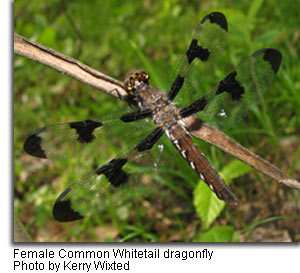
What it Takes to Be a Dragon
Dragonflies and damselflies are classified as odonates (from the Greek word for, "toothed"). Odonates are insects with large heads and well developed compound eyes. They have 3 pairs of legs which are used like a basket to scoop up prey and grab on to surfaces. Odonates also have long abdomens and two sets of powerful wings. Often, the color of eyes and face as well as markings on the thorax (segment between the head and abdomen) and abdomen color can help with odonate identification.
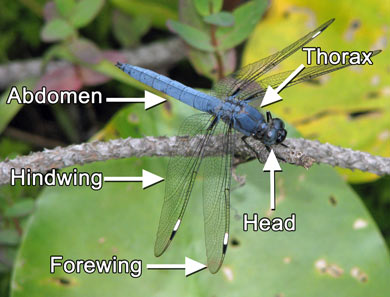
As juveniles, odonates are semi-aquatic or aquatic. The odonate larvae, also known as nymphs, are carnivorous and feed on small insects and other insect larvae, fish and tadpoles. Their jaws actually shoot out of their mouths in one one -hundredth of a second to grab their unsuspecting prey and pull it back into the mouth.
Compared to dragonfly larvae, damselfly nymphs have longer abdomens with feather-like gills protruding from their ends. Dragonfly nymphs, conversely, are short and stout with gills on the inside of their abdomen. The larval stage can last anywhere from one to six years. Eventually, the nymphs grow, shed their larval skins and develop into flying adults.
Since odonates do not have an intermediate stage between larvae and adults, odonates are characterized as undergoing “incomplete metamorphosis”, also known as hemimetaboly.
When odonates mate, they couple together using special clamp-like appendages at the end of their abdomens. This process is called being ‘in tandem’, and the mating odonates often form a wheel or heart-like shape. Depending on the species, the male may or may not stick around to guard the female as she lays her eggs. The egg laying process is known as ovipositing. Eggs can be placed on vegetation, in the water, in the soil or even in rotting wood.
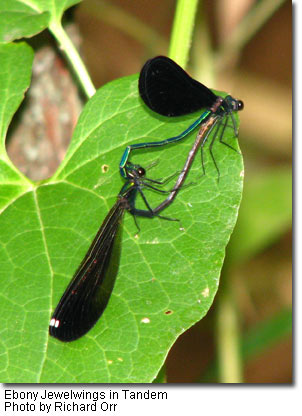
Damsels Vs Dragons
Dragonflies and damselflies are relatively easy to tell apart once you know what to look for. The following list goes over common differences between the two groups of odonates.
- Body shape: Damselflies have slender bodies while dragonflies are much stouter.
- Eyes: Damselflies have well separated eyes while dragonflies have eyes that are close together and usually meet in the middle of the head. (see picture below)
- Wings: Damselflies tend to hold their wings over their back when resting while dragonflies tend to keep their wings open over their bodies. One exception to this rule are spreadwing damselflies.
- However, this group can be separated from dragonflies by looking at their body shape and the space between their eyes.
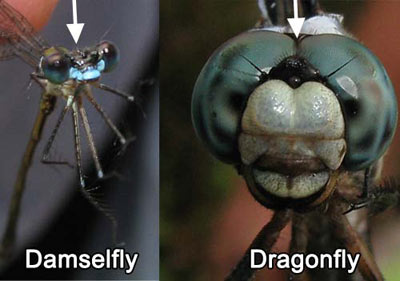
To learn more about common damselflies in Maryland, click the Ebony Jewelwing below.
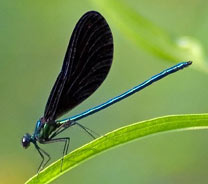
To learn more about common dragonflies in Maryland, click the Blue Dasher below.

For more information, please contact:
Maryland Department of Natural Resources
Wildlife and Heritage Service
Tawes State Office Building, E-1
Annapolis MD 21401
410-260-8540
Toll-free in Maryland: 1-877-620-8DNR
[email protected]
Acknowledgements:
- Female Common Whitetail by Kerry Wixted
- Spangled Skimmer by: Kerry Wixted
- Male Ebony Jewelwing by Richard Orr
- Blue Dasher by Richard Orr